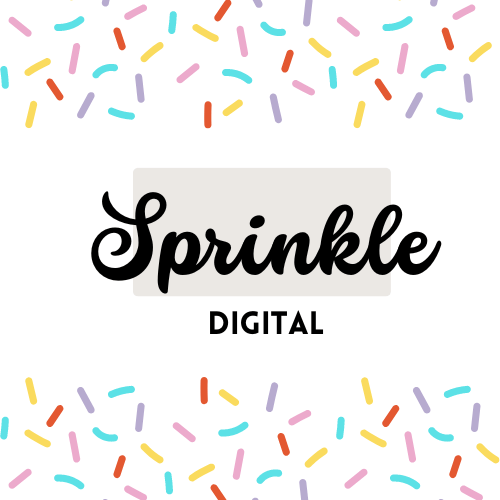If you’ve just started your blog then congrats!
Now you’re finding yourself in front of a blank page. Yup, I’ve been there. It can be well.. umm daunting. You’re probably wondering what the hell you’re even doing. So what exactly do you write about and how do you do it?
Creating a blog post goes beyond putting words on a page. You need to captivate your readers and keep them interested. You do this by creating value with the right structure, tone and content and offering it on your blog.
Here’s my ultimate guide on how to write your first blog post + my favorite tips.
How to Write your First Blog Post + (first blog post tips)
Blog Post Checklist
1. Select your Niche and Brainstorm Topics
Choose your niche and brainstorm topics.
If you haven’t already picked your niche don’t miss: How To Choose a Profitable Niche and What Niches to Avoid
For blog topics check out this great resource: 550 KILLER Lifestyle Blog Topics to Keep Readers Coming Back
2. Use SEO for your Blog Posts
In an ideal world you would be writing what you want and getting the views, but that’s not how it works.
You need to do keyword research and find out which topics people want to read, and what your chances of you RANKING in search engines (if you write on that topic). That’s how you choose keywords and do keyword research.
Make sure to properly research which keywords you are going to use before writing your post. Then incorporate these throughout your post in the title, subheadings and body of the text.
In my beginning SEO days I learnt to do it this way:
Use keyword once every 100 words.
If total word count is 1000 then use keyword 10 times.
Now I don’t bother counting and use a plugin like AISEO to tell me how many times to use each keyword.
Related: Free and Cheap SEO Tools You Can’t Afford to Ignore
3. Create an Outline
Ya this may sound boring- but it’s essential. You need to make sure you have a proper outline for your blog post, or at least know what you’re going to talk about. This means you won’t get sidetracked with your writing. Your outline doesn’t have to be elaborate- just stick to the essentials.
3. Why you Need a Catchy Title
Your blog post headline is the first thing readers see, so make it count. A catchy title has the power to make readers click.
Don’t be afraid of using clickbait titles as long as you do it well. Yup, it’s possible to use clickbait the right way without being a douche.
Related: The Best Clickbait Examples you NEED for Headlines [Without Being Sus]
4. Write Like you’re Talking to your Bestie (minus the gossip)
Gone are the days of writing long boring essays in high school. Writing a blog post shouldn’t be like writing a scientific research report. Nobody enjoys reading boring, factual, monotonous blog posts. To keep your readers interested, use a writing style that makes them feel as if they are talking to you (umm minus the swearing- if that’s you). Make it conversational like you’re talking to a friend. I love blog writers who add their personality to their writing and use some humor and wit.
5. Break up Your Post for Easy Reading
Big chunks of text (I call them bricks) can be annoying and overwhelming for readers. Make sure you break up your content into sections using subheadings.
6. Keep it Short and Sweet
Long paragraphs can be overwhelming for readers so try to keep them 3-5 sentences long.
7. Use Internal Links to Guide your Readers
Including links to related posts on your blog can help guide readers towards relevant content. This keeps them engaged and makes them spend more time on your website (which is what you want).
8. Use visuals
Using images or videos can add depth and context to your words while also breaking up chunks of text. The more you use your own photos the better for SEO. I’d rather include less photos if they are not mine than photos that are.
9. Support your Claims with Data and Numbers
If you’re writing a data driven article. Try to use sources to back up your statements. Numbers don’t lie, so use statistics or data to reinforce any arguments you make in your post. This not only adds credibility, but breaks up sections that are heavy on text.
10. Encourage your Readers to Engage with You (No not to ‘get engaged’ with you- that’s diff.)
A lot of bloggers miss this and it’s so important. Towards the end of your post include a call to action that motivates readers to interact further with your website.
Do you want them to buy a product, check out an important blog post, sign up for your newsletter?
Say so.
11. Keep it Simple
Avoid using complicated language that might confuse readers who’re less familiar with the subject matter. Again, this is not a scientific report. Keep your sentences simple and easy for everyone to understand.
Also simplify content ideas. When presenting ideas or lots of information use bullet points or numbered lists. This makes it easier for your reader to follow and makes the text less intimidating.
12. Proofread Before Publishing
Duh. This is an obvious one, but oh so important.
Before publishing your post make sure to proofread it times for grammar and spelling errors. If you’re cool with your blog not being anonymous, pass it around to your friend or colleague and see what they think.
13. Check the Post on your Phone
After publishing, make sure you to double check your post looks good on your mobile device. Most readers use their phones when browsing online, so your blog needs to look good. Check that your text and images are clear and your links are easily clickable.
14. Respond Promptly and Respectfully
Being the fuzzball of nice that you are, make sure to respond promptly to readers in the comments section. This will help build a community, around your blog and encourage readers to return for content. Plus, having lots of comments is great for SEO. So, the more comments you respond to the better.
When you’re done, don’t hesitate to promote your post on popular social media platforms. I haven’t had any luck with Twitter and decided to stop after 7 months, but Pinterest is an important one.
I have a Pinterest Business account (it’s free) and I use it to create pins and promote my blog posts.
Related: Why You Need a Pinterest Business Account: Quick Setup + Tips for Success
15. Share Your Post on Social Media
Whenever appropriate, you can share posts from bloggers within your niche. This not only helps build relationships with other bloggers but also provides added value to your readers by directing them towards helpful resources.
Also don’t miss these places: 19 Low-Key Places to Promote your Blog for FREE
Takeaway
Hopefully, writing your first blog post is not as intimidating any more. Try not to get too caught up in crafting the perfect blog post and just START. You can always go back and improve it later.
Blogging is fun. Make sure to sprinkle your personality and funny juices everywhere and just start writing!
Let me know what was the first article you ever published on your blog 😊
Found this guide on How to Write your First Blog Post helpful? Pin it now and read it again later

